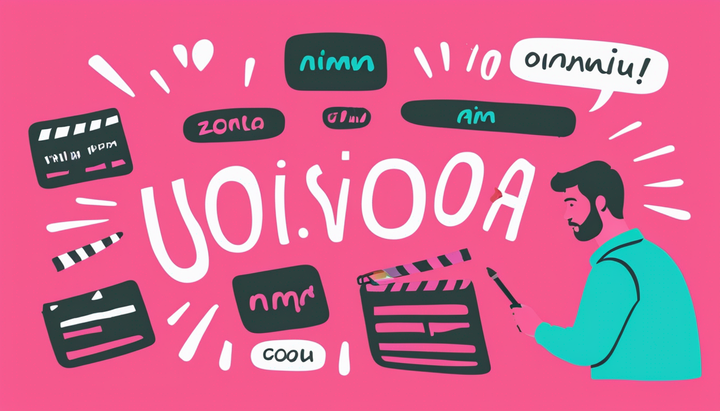What's a Branded Streaming Platform (And Should You Have One)?
Why are brands like Lavender.ai and HockeyStack creating their own branded streaming platforms? In this article, we break down what's behind this new trend and key principles you can carry into your own video marketing strategy.
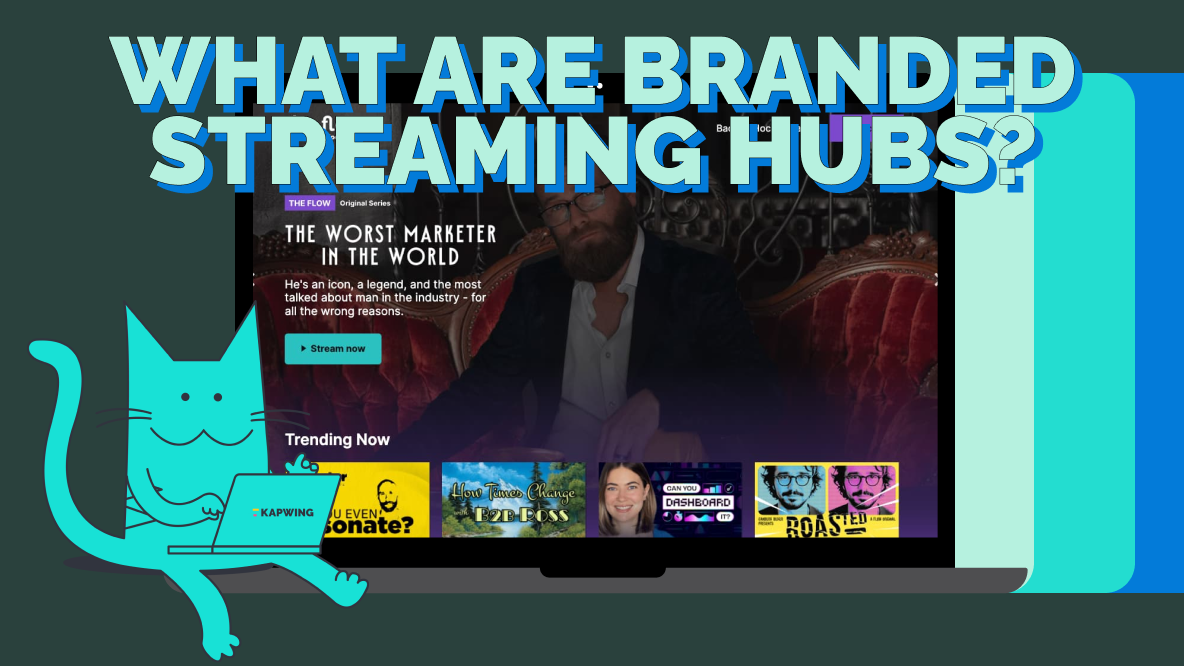
Video-first strategies are emerging as the new standard for content marketing teams.
For most brands, that means producing original video content across multiple platforms. For some brands, though, that means producing original video platforms.
Recently, brands have been grabbing attention by launching their own "streaming hubs."
So, what is a branded streaming platform? And is this the future of video marketing, or yet another hype-fueled distraction?
To answer these questions, let’s dive deeper into two recent launches: Lavender Land by Lavender.ai and The Flow by HockeyStack. Today, we'll share a look at the platforms, insight into the apparent strategy, and what the potential takeaways are for marketing teams broadly.
What is a branded streaming platform?
We’re all familiar with classic streaming services, like Netflix, Hulu, etc.
Branded streaming platforms work similarly, minus the monthly subscription fee. Best described as video-first content initiatives, produced and hosted in-house—though sometimes including external creators—these streaming hubs focus on building brand awareness through original, organic content over direct conversion.
The main style of this content is franchise or serial video content that tries to reach end-users and buyers. It ranges from pure entertainment to niche education.
First, some examples of branded streaming platforms
Let’s take a look at The Flow, a streaming platform hosted by the brand HockeyStack.
The homepage layout is similar to what you’d see on Netflix, with multiple suggested shows—if Netflix only hosted content about B2B marketing.
There are several categories of content (Entertainment, Edutainment, Tactical, and Educational), as well as a variety of mediums. You have short-form video shows, like “How Times Change with B2B Ross” and “The Worst Marketer in the World” with 40-second episodes.
You can also tune into longer-form content, like podcast episodes and even a documentary series.
Another brand (also in the B2B space) producing and hosting their own content is Lavender.ai. Here’s Lavender Land, a content hub completely dedicated to sales education:
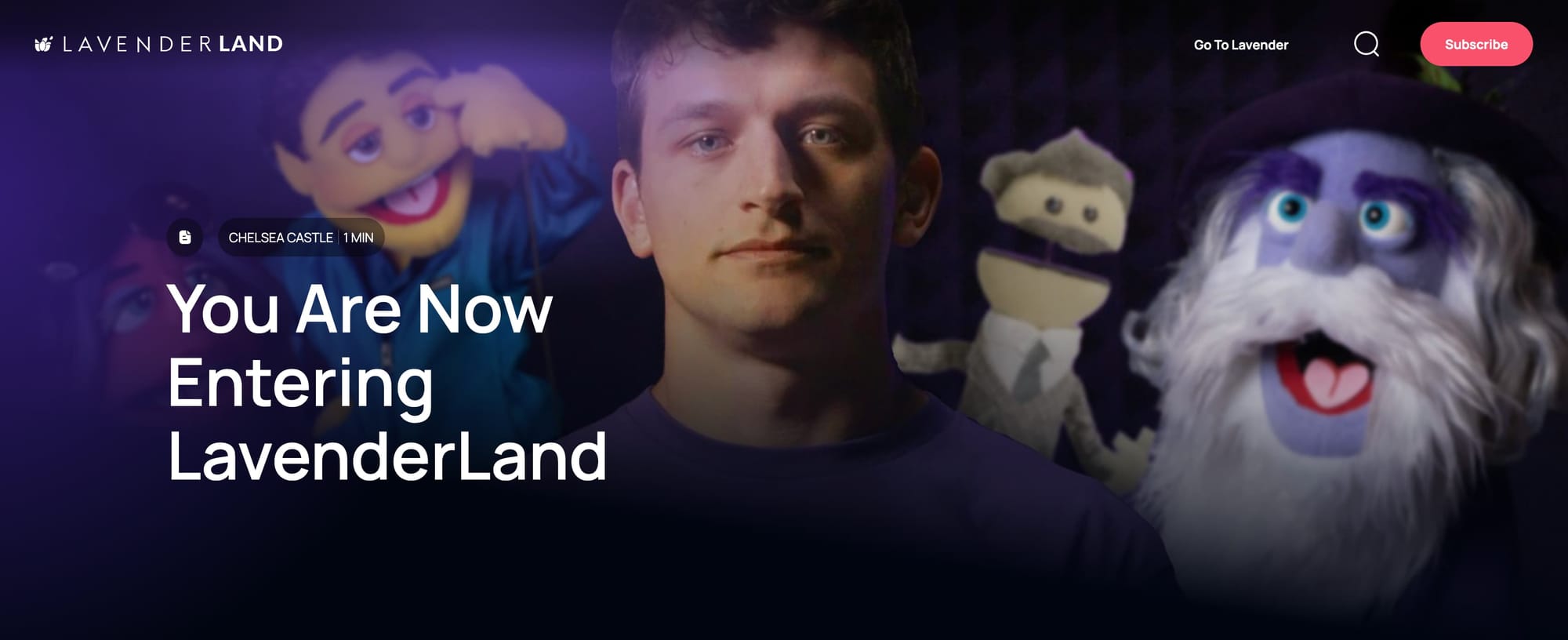
The majority of content here is short-form, like their “Rant Time” series, but you can also watch longer videos, ranging from on-demand live recordings (usually hitting the 30 min mark) to video podcast episodes (typically ~15 min).
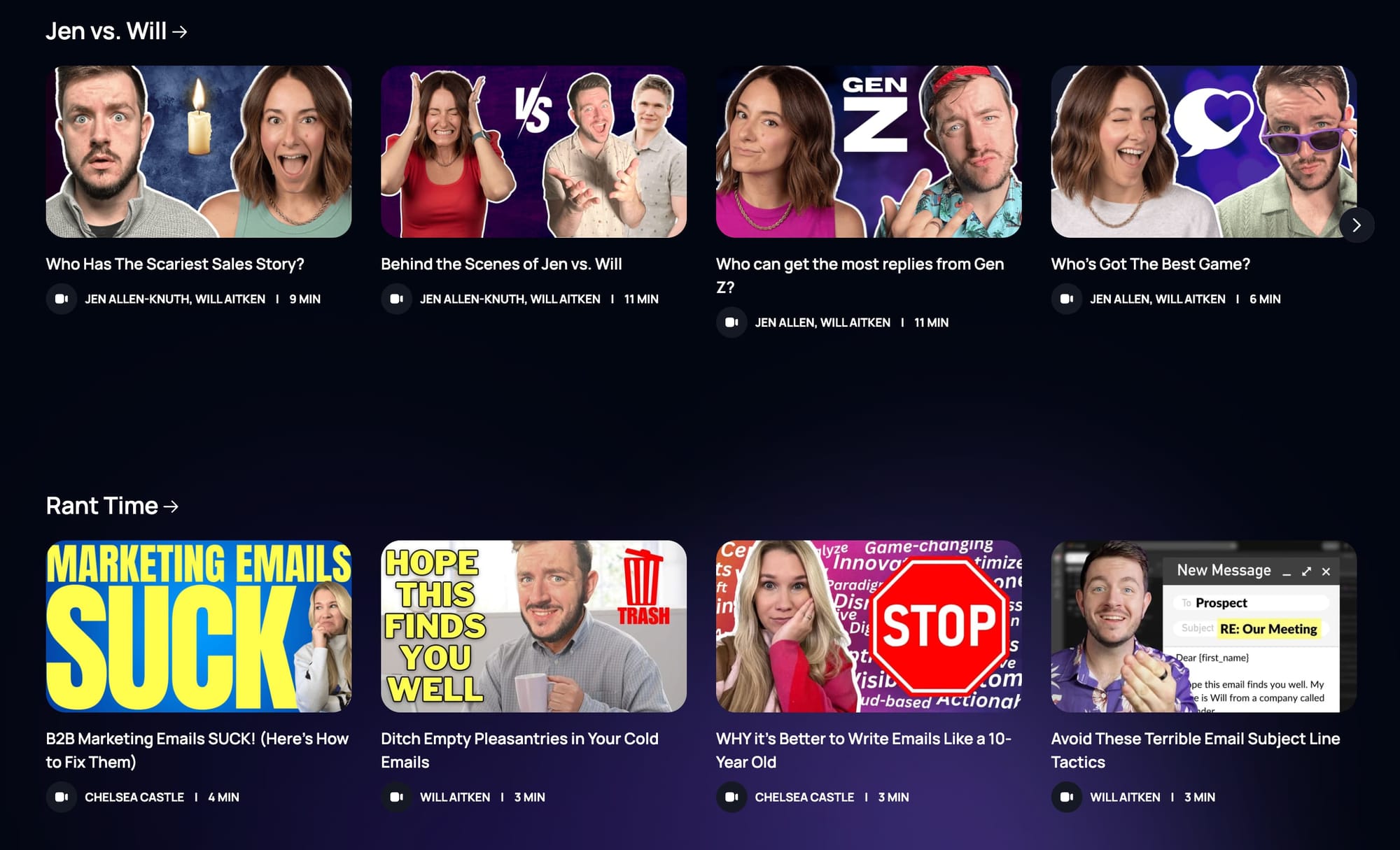
A nice touch: Video length is clearly marked for all episodes right on the homepage, so viewers know what they’re getting into up front.
Why are brands investing in streaming platforms?
So, what’s going on here? What’s driving companies to experiment with efforts like this?
While we can’t know exactly what compelled any individual company to try something, or how they're measuring success, we can look at the marketing trends that seem to be spurring these efforts.
From discovery to purchase decisions, people favor video at nearly every stage of their customer journey. The natural result? Brands create more video. But where are they putting all of that video? Most brands don’t have a “Resources Library” for video, the way they do for blog content or help center articles.
But what's driving the newfound enthusiasm for video right now? Let’s break this trend down into its individual parts.
1. The way people buy products is changing
Think of running a “search” in 2023. What does that mean?
It used to unequivocally mean going to Google or some other search engine. For many people, it now means starting your search on a video-based platform like TikTok or YouTube.
In some cases, people default to a video-based platform simply because it’s the platform they’re most comfortable with. TikTok or Reels are where many people spend the rest of their time online, and so they begin searching on these platforms, too.
In other cases, people default to YouTube or TikTok because they prefer a video result for their specific question or problem. They don’t want to find a page that maybe has a video about how to change their car battery. They want to find a video of someone walking them through it, step-by-step.
More and more, however, people are searching video platforms because of a growing aversion to traditional search engines. They've come to expect half-spun content curated by affiliate marketers, or some brand trying to aggressively pitch them on their product.
Because of this shift in search behavior, we’re now seeing even traditional search engines bias more toward video. The top results for many queries now contain videos—almost always a YouTube video, unsurprisingly.
And video platforms have definitely caught on to users’ search behaviors, too. TikTok is pushing their search function more with the “related searches” button on certain videos.
2. Teams are placing more value on properly attributed demand creation
For a long time, search was king when it came to acquisition because tracking it in attribution software is easy and reliable. Now, champions of more nuanced, hybrid attribution like Chris Walker of Refine Labs are questioning if software-based attribution tells the whole story.
By comparing what the software was telling them with what customers were saying, Refine Labs was able to zero in on this attribution gap.
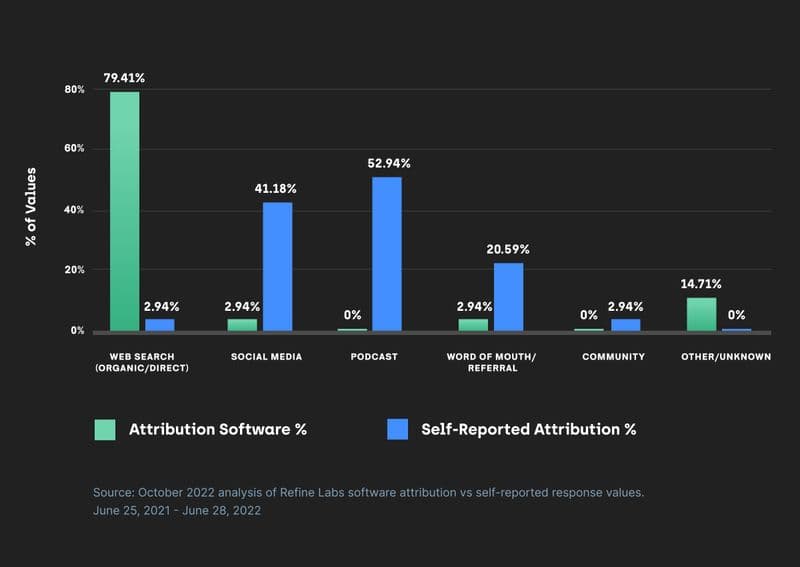
Data like this has many brands questioning traditional (and increasingly competitive) marketing channels, like paid search and display, and placing bigger bets on “dark social”—channels that are harder to track directly and under-perform when measured solely with software-based attribution. But once you ask paying customers...
3. Brands are looking for ways to extend the shelf-life of their videos
The net result of all of this is far more investment in content, and video content in particular.
HubSpot data shows that the marketers are investing more into video than any other channel in 2023. Why? Because they see more ROI with video. In fact, short-form video is the #1 predicted marketing investment this year.
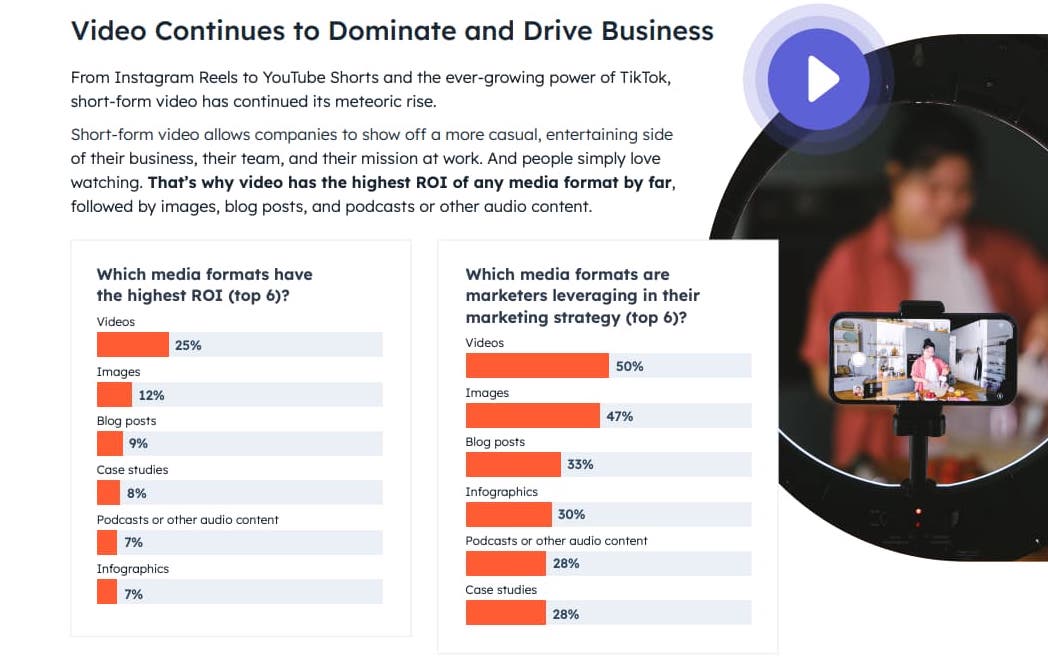
All that investment means that brands have stockpiled a lot of video content—but all of it is posted natively on social platforms. That’s not a bad thing: more organic content means more opportunity for discovery.
But when you’re posting on channels you don’t own, a lot of things are left out of your control.
One major hurdle for brands to clear is getting viewers from whichever platform they discovered you back to your own site. Every social media channel where you distribute video is stingy about driving people off site. They want you to stay on the platform. Even saying the words “Link in bio” in a TikTok video feels like it will summon the algorithm gods to bury your video at the bottom of the FYP.
Another issue with social media is the flash-in-the-pan nature of social content. Especially when it comes to short-form video. You’re looking at a shelf-life of a few days for some posts. For fleeting video trends and current events, that’s fine, but what about more evergreen content and thought leadership pieces with staying power?
Brands that invest heavily in video are creating content across the full funnel: educational content about their product and narrative as well as entertaining content that drives awareness and gets people to associate their brand with a certain outcome. Once these videos vanish from social feeds, they don’t necessarily lose their value—as long as you have a way to repurpose them.
Like, say, hosting them on your own streaming platform.
What can we learn from branded streaming platforms?
We’re not suggesting that every brand needs to launch their own streaming hub. But, new initiatives like these can reveal or simply remind us where video marketing is heading.
What every brand should be asking is what they could be doing to unlock more value from video. Ask yourself: Are most of your videos living off site on social platforms? Are they really getting the shelf-life they could? Can new customers or prospects discover them once the algorithm says, "No more"?
Studying Lavender.ai and HockeyStack, we can see three apparent key principles for the branded streaming approach emerge:
1. Video is the premiere medium to create demand
Video is the best channel for creating demand. And not just because most platforms bias toward video right now, although that helps. It’s easier for viewers to build trust and connection watching a video, especially a video featuring a person talking, than reading a blog post or scanning a white paper.
Traditionally, we think about channels like social and video (now essentially synonymous) as awareness channels. But that’s likely because we’re not attributing leads and conversions with enough accuracy. Looking at video as the demand driving activity means it needs to be measured as such, too.
2. Bet on content value; not production value
Back in 2019, Mailchimp debuted their streaming platform, Mailchimp Presents. It’s all glossy, high-production shows in collaboration with studios like Vice and WME.
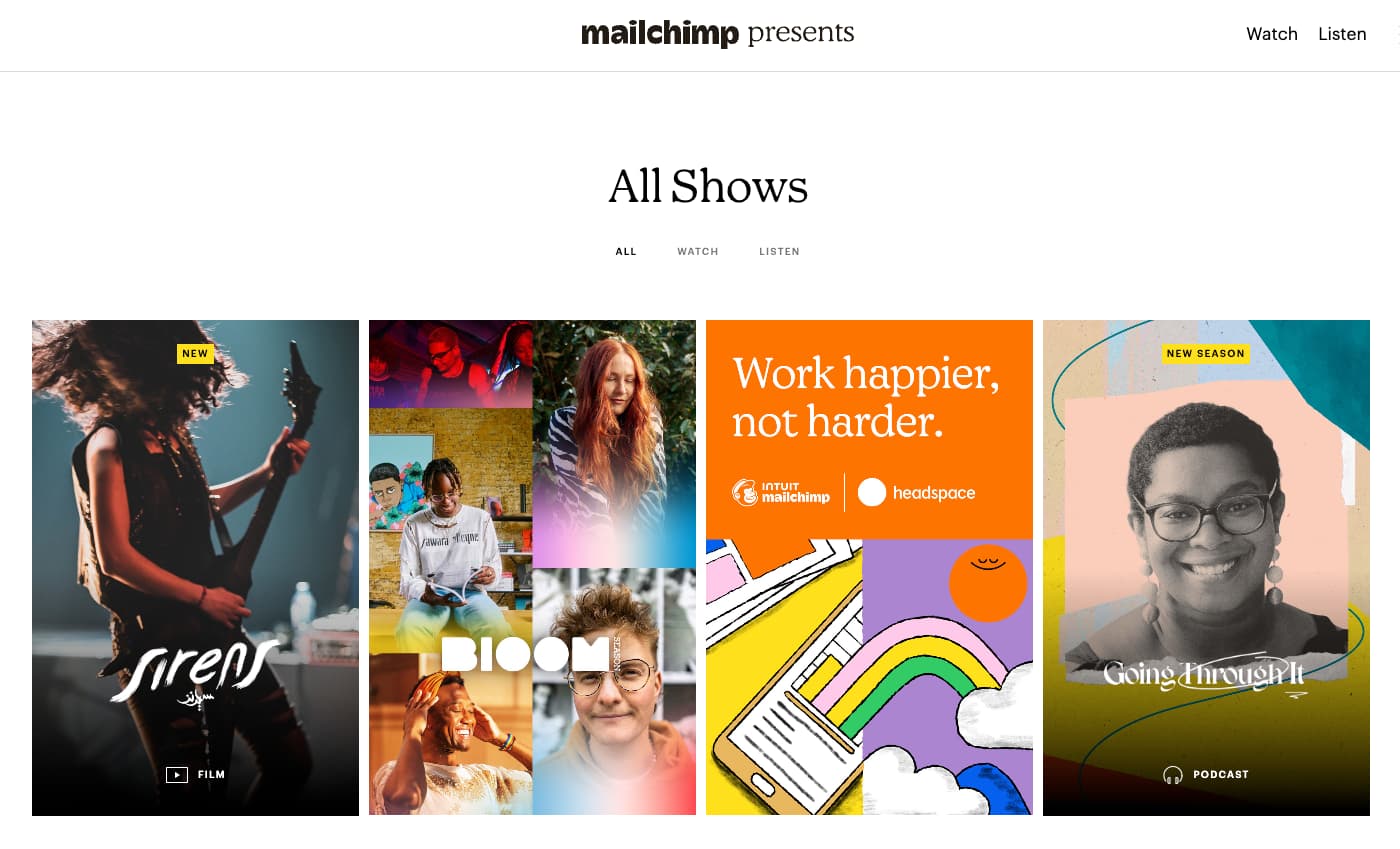
Impressive, award-winning, and clearly feasible for a brand like Mailchimp—they’re still pumping out content four years and one global pandemic later. It's inspiring, but not exactly replicable by your average content marketing team. And who's to say how well it's actually working?
The shows on Lavender Land and The Flow are lower-fidelity but just as effective for their respective brands, if not more so. Small teams know: You'll get better ROI when the production is good and the content is great.
3. Distribution is baked into the strategy, not an afterthought.
Both Lavendar.ai and HockeyStack sourced outside creators with existing audiences and influence to support their in-house teams produce shows.
And as a content distribution format, streaming hubs are definitely attractive. They allow you to (1) organize content to increase discoverability, (2) de-anonymize social video viewers into traffic on your website and pass those details off to sales, and (3) prevent users from navigating away from your videos.
Are these good enough reasons to go all in on this strategy, though?
Time will tell.
Branded streaming is still a trend to watch
Turning a branded streaming hub into a content viewing destination, a la Netflix or Prime Video, will likely be a tough, uphill battle.
Unless you create a surprise smash hit series, you can expect most of the ROI for your video content to still come through the traditional native social channels. And any marketer who’s ever been given the missive to “just make it go viral” will know how hard it is to bank an entire strategy on the expectation of creating a smash hit.
Brands selling products with a high Customer Lifetime Value (CLV) can afford to reach a smaller number of people and spend more time nurturing that audience. Add to that, selling their brand’s point of view and establishing expertise and authority are must-haves, not nice-to-haves. They only need their streaming hub to win a select number of deals to see significant ROI.
For brands that need to reach a much larger audience, building an entire streaming hub might not be as feasible.
This could still be a trend to watch, though. We’re fans of anything that challenges existing perceptions of video and content marketing, even if it doesn’t prove to be the next big thing for everyone.
For a more in-depth discussion, catch the first episode of our new podcast, The Shortcut:



